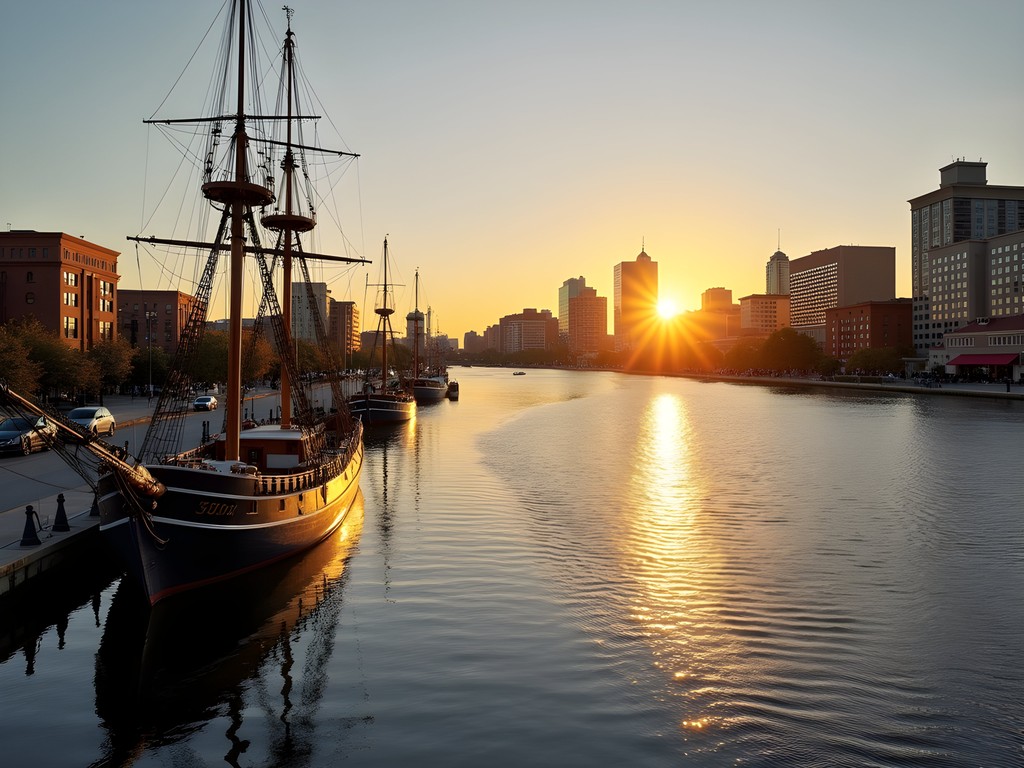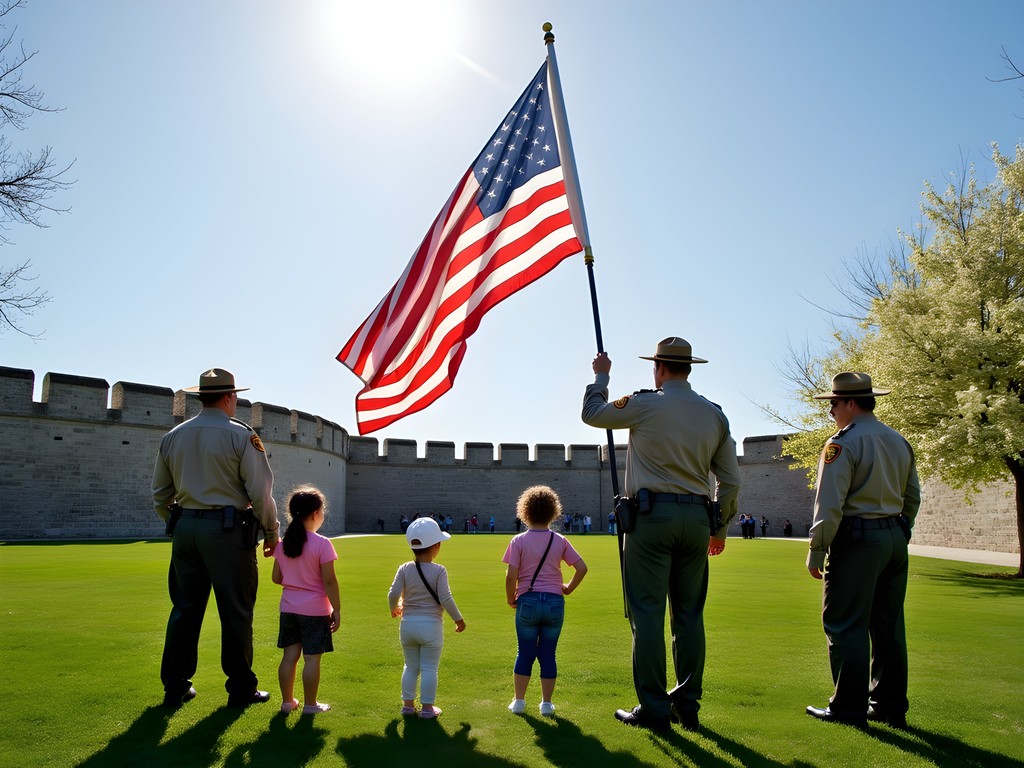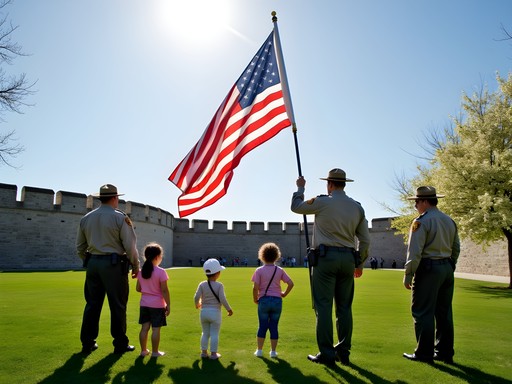Disclosure: This article contains affiliate links. We may earn a commission from purchases at no extra cost to you, which helps our travel content.
As someone who spends her days interpreting the layers of legal precedent, I find myself equally drawn to places where history accumulates in visible strata. Baltimore's harbor area presents just such a palimpsest—a text written over many times yet still revealing its earlier inscriptions. This spring weekend, I set aside my judicial robes to trace the contours of this city's maritime legacy, discovering how accessible this rich historical tapestry can be for families seeking meaningful connection with America's past without breaking the bank.
The Inner Harbor Renaissance: A Historical Context
Baltimore's Inner Harbor stands as one of America's most successful urban renewal projects—a transformation I find fascinating both as a judge who understands the complex legal frameworks behind such developments and as a heritage enthusiast. In the 1970s, this once-declining port area underwent a remarkable metamorphosis from industrial wasteland to vibrant cultural center.
Walking along the brick promenade today, it's difficult to imagine the dereliction that once defined these waterfront blocks. What strikes me most is how the development managed to preserve maritime character while creating family-friendly spaces. The Harbor Place pavilions, with their distinctive white canopies, anchor the modern landscape while nodding to the sailing vessels that once dominated these waters.
For families exploring on foot, I recommend starting your journey at the Visitor Center near Light Street, where you can pick up a free Harbor History Trail map. These waterproof guides are invaluable for self-guided exploration, especially when spring showers appear. I keep mine protected in a document organizer that's become indispensable for my heritage research trips—perfect for keeping maps, museum pamphlets, and genealogical notes organized and dry.

💡 Pro Tips
- Visit the Baltimore Visitor Center first for free maps and current event information
- The Harbor History Trail is well-marked with interpretive signs, making it easy for children to follow along
- Early mornings offer the best photography light and fewer crowds
Maritime Marvels: The Historic Ships Collection
The crown jewels of Baltimore's harbor history are undoubtedly its collection of historic vessels—floating time capsules that offer immersive glimpses into maritime life across different eras. As someone who researches genealogical connections, I find these ships particularly moving; many of my Scottish ancestors made their Atlantic crossings on similar vessels before settling in Canada.
The USS Constellation, the last sail-only warship built by the U.S. Navy (1854), stands as the collection's centerpiece. What makes this vessel exceptional for family visits is the living history program—during our spring visit, my friend's children were captivated by the costumed interpreters demonstrating knot-tying techniques and naval communications. The look of wonder on their faces as they learned to send messages using signal flags was worth the modest admission fee.
For families with maritime enthusiasts, I recommend purchasing the Four-Ship combo ticket, which provides significant savings over individual admissions. Before boarding, I suggest equipping children with a kids maritime explorer kit which includes a compass, magnifying glass, and activity booklet—this transformed our young companions from passive observers to engaged explorers, eagerly identifying ship components and navigational tools.
The submarine USS Torsk offers a completely different perspective on naval history. Climbing through its narrow hatches and confined quarters gives visitors—especially children—an authentic sense of submariner life that no textbook could convey.

💡 Pro Tips
- Purchase the Four-Ship combo ticket for best value
- Plan at least 45 minutes for each vessel exploration
- Visit on weekdays during school hours for a less crowded experience
Fort McHenry: Where History Inspired Anthem
No historical exploration of Baltimore would be complete without venturing slightly beyond the immediate harbor to Fort McHenry National Monument. As someone who studies the legal foundations of our nation, standing where Francis Scott Key witnessed the bombardment that inspired our national anthem creates a profound connection to America's constitutional development.
While technically not on the Harbor Trail proper, the fort is easily accessible via a water taxi from the Inner Harbor—an excursion that provides both historical context and delightful harbor views. The water taxi system itself represents an enjoyable transportation method that children particularly appreciate. I recommend purchasing the Baltimore harbor passport which combines water taxi access with discounted admission to multiple attractions.
The fort's Junior Ranger program deserves special mention for families. The educational materials strike that perfect balance between entertainment and education—a pedagogical approach I wish more historical sites would adopt. During our visit, the daily flag demonstrations proved especially moving, as rangers invite children to help fold the massive garrison flag while explaining its significance to our national story.
The spring timing of our visit coincided magnificently with the fort's gardens coming into bloom, creating a poignant juxtaposition between the martial architecture and the renewal of nature—a metaphor not lost on the reflective traveler.

💡 Pro Tips
- Take the water taxi for the most scenic approach to the fort
- Allow 2-3 hours to fully experience the fort and its exhibits
- Attend the flag change ceremony for an educational and emotional experience
Hidden Gems: Fell's Point and Beyond
While Baltimore's main harbor attractions draw the crowds, my judicial inclination to examine evidence beyond the obvious led me to Fell's Point—a historic district that offers a more intimate connection with the city's maritime past. This cobblestoned neighborhood, just a pleasant 20-minute walk east of the Inner Harbor, preserves the architectural character of Baltimore's 18th and 19th-century heyday.
For families seeking an authentic glimpse into working-class maritime history, the Fell's Point Maritime Museum provides a perfect counterpoint to the more commercial Inner Harbor experiences. Here, children can explore exhibits on shipbuilding and immigration that tell the stories of ordinary people who shaped America's maritime economy. The museum's collection of shipbuilding tools particularly fascinated my friend's son, who spent nearly an hour examining the specialized implements used by craftsmen to transform raw lumber into seaworthy vessels.
To make the walk between the Inner Harbor and Fell's Point more engaging for young explorers, I recommend bringing along a kids treasure hunt book. This cleverly designed activity book transforms the journey into an educational treasure hunt, with children searching for architectural details and historical markers along the route.
For lunch, skip the harbor's chain restaurants and venture to Fell's Point's Broadway Market—one of America's oldest continuously operating markets (since 1786). Here, local vendors offer affordable fare that connects visitors to Baltimore's culinary traditions. The market's recent renovation has created a family-friendly atmosphere while preserving its historical character—a balance I appreciate both as a preservationist and as someone who enjoys introducing children to cultural experiences through food.

💡 Pro Tips
- Walk from the Inner Harbor to Fell's Point along the waterfront promenade for the best views
- Visit Broadway Market for authentic and budget-friendly local food options
- Look for the blue historical markers that highlight significant buildings and events
Mindful Moments: Connecting Past and Present
As both a judicial professional and mindfulness practitioner, I find historical sites offer unique opportunities for contemplative engagement—a practice particularly valuable when traveling with children. Baltimore's harbor area provides several perfect settings for what I call 'historical mindfulness'—moments where we can pause to connect deeply with the continuity of human experience.
One such spot is the Frederick Douglass-Isaac Myers Maritime Park, which commemorates African American maritime history in a thoughtfully designed space. Here, I guided my friend's children through a simple exercise: closing our eyes beside the water to listen to the same harbor sounds Douglass might have heard, then opening them to note what has changed and what remains constant. This practice—accessible even to young children—creates a tangible connection to historical figures that transcends traditional museum experiences.
For families seeking quiet reflection amid the harbor's bustle, I recommend the garden at the Top of the World Observation Level in the World Trade Center. This often-overlooked spot offers panoramic harbor views that help visitors understand Baltimore's geography and historical development. I bring my portable meditation cushion to create a comfortable space for journaling or sketching the landscape—activities that help children process and personalize historical information.
These mindful pauses serve multiple purposes: they provide necessary breaks between more active explorations, deepen historical understanding through sensory engagement, and create space for children to ask questions arising from their observations. As a judge accustomed to weighing evidence and context, I find these reflective practices equally valuable in historical interpretation.

💡 Pro Tips
- Schedule 'mindful moments' between major attractions to prevent historical overload
- Encourage children to sketch or journal about their observations at historical sites
- Use all five senses to connect with historical environments—touch the cannon barrels, listen to harbor sounds, smell the brackish water
Final Thoughts
As I departed Baltimore, I found myself reflecting on how this compact harbor area offers an accessible entry point to American history that few other cities can match. The juxtaposition of preserved historical vessels against the modern harbor development creates a uniquely readable timeline—one that families can traverse at their own pace and budget.
What makes Baltimore's harbor history trail particularly valuable is its multi-layered narrative that encompasses maritime commerce, naval history, immigration stories, and the African American experience. This complexity allows families to engage with historical themes that resonate with their own heritage and interests.
As both a judge and genealogical researcher, I'm acutely aware that history isn't merely about preserving the past—it's about creating frameworks for understanding our present and shaping our future. Baltimore's harbor, with its thoughtful balance of education and entertainment, offers families an opportunity to engage with these connections in ways that are simultaneously accessible and profound.
I invite you to walk these historic pathways with your own children, allowing the stones, ships, and stories to speak across time. In doing so, you may discover—as I have—that the most meaningful travel experiences are those that help us locate ourselves within the continuing human narrative.
✨ Key Takeaways
- Baltimore's Harbor History Trail offers budget-friendly historical exploration perfect for families with children of all ages
- The combination of museums, historic ships, and preserved districts creates a multi-dimensional understanding of maritime history
- Spring visits provide ideal weather and smaller crowds for exploring outdoor historical sites
- Incorporating mindful moments between attractions enhances historical understanding and prevents overwhelm
- Self-guided exploration using free maps and targeted resources can be more engaging for children than formal tours
📋 Practical Information
Best Time to Visit
April-May (spring) or September-October (fall)
Budget Estimate
$150-300 for a family weekend (excluding accommodations)
Recommended Duration
2-3 days
Difficulty Level
Easy
















Comments
Taylor Moreau
Excellent write-up, Zoe! As someone who visits Baltimore quarterly for business, I'd add that Fell's Point deserves an evening all to itself. The preservation of those cobblestone streets alongside the waterfront establishments creates a remarkable atmosphere, especially at sunset. I'd recommend the guided ghost tour that starts at 8pm - it's historically informative rather than tacky, and the guide I had (Robert) was formerly a history professor at Johns Hopkins. I always bring my pocket guidebook which has an excellent fold-out map of the harbor area that's proven invaluable when my phone battery dies from taking too many photos!
journeyclimber
Ooh, I didn't know about the ghost tour! Adding that to my list for next time. Any specific restaurants in Fell's Point you'd recommend?
Taylor Moreau
Thames Street Oyster House if you enjoy seafood - make reservations well in advance. For something more casual, try Ekiben for their Asian fusion sandwiches. Absolute gem of a place!
journeyclimber
This brings back memories! We visited Baltimore last summer and the Harbor History Trail was the highlight of our trip. Fort McHenry was so much more impressive in person than I expected - watching that video before they raise the flag gave me chills! Did anyone else take the water taxi to get around? We found it was a fun way to see the harbor from different angles.
Taylor Moreau
The water taxi is absolutely the way to go! I was there on business last month and used it to maximize my limited free time. Much more pleasant than rideshares in traffic. Did you make it to the USS Constellation? That was my favorite of the historic ships.
journeyclimber
Yes! The USS Constellation was awesome. My kids were fascinated by all the different levels and how people actually lived on those ships. We spent way more time there than I expected!
starway
Your photos really capture the harbor's charm! That shot of the sunset behind the USS Constellation is postcard-worthy. Did you use a special lens?
MaritimeHistory
If you're into the maritime history aspect, check out the Maritime Museum's special Saturday morning tours. They take you into areas normally closed to the public, including the original customs house basement. Book at least 2 weeks ahead!
Zoe Watson
This is fantastic info - I completely missed this! Adding it to the article notes for when I update it. Thank you!
waveninja
Just got back from Baltimore and used this post as our guide - thank you Zoe! Fort McHenry was even better than expected - they do this emotional flag ceremony and the rangers tell amazing stories. The kids were actually interested in history for once! Fell's Point was our favorite neighborhood though - cobblestone streets, old buildings, and we found this amazing little bookshop with a section on local maritime history. The USS Constellation tour was a bit pricey but worth it - my son got to help hoist a sail during their demonstration. One tip: the Baltimore Heritage Walk connects a lot of these sites with good signage and it's free!
greenninja
Great post! How easy is it to get around without a car? We're thinking of taking the train from DC for a day trip.
starway
We did exactly that last month! Super easy - the MARC train drops you at Penn Station, then free Charm City Circulator buses connect to the harbor. Everything at the harbor is walkable. One day is tight though - we wished we'd stayed overnight.
greenninja
Thanks for the tip! Maybe we'll make it an overnight then. Any hotel recommendations near the harbor?
starway
We stayed at the Hyatt Place in the Inner Harbor. Great location - could walk everywhere! Fell's Point has cute B&Bs too if that's more your style.
Casey Andersson
Zoe, your legal perspective on historical layering is such a refreshing take! I visited Baltimore last autumn and was captivated by Fort McHenry - standing where Francis Scott Key watched that famous bombardment gave me goosebumps. The harbor water taxi was my secret weapon for getting around - I hopped between attractions while enjoying gorgeous views of the cityscape. The maritime museums were incredible, but my highlight was actually an evening ghost tour through Fell's Point where the guide shared sailors' stories from the 1800s that you'd never find in guidebooks. Did you get a chance to visit the Admiral Fell Inn? The bartender there told me the most fascinating stories about sailors who never 'checked out'...
waveninja
That ghost tour sounds amazing! Was it a specific company you booked with? Planning a trip there in October and that would be perfect!
Casey Andersson
I used Fells Point Haunted Pub Tour - they do both family-friendly walking tours and adult pub crawls. The guides are actual historians, not just people in costumes. Perfect for October!
redguy
Love this! Baltimore's harbor has so much more history than I realized. Adding this to my weekend trip list!
Casey Andersson
You won't regret it! I spent three days just exploring the harbor area last year. The contrast between the modern Inner Harbor and historic Fell's Point is fascinating.
TravelWithKids
Would you recommend this trail for families with younger kids (7 and 9)? Or would they get bored with the historical aspects?
explorebackpacker
Not the author, but I took my nephew (8) last year and he loved the ships! They have special activities for kids on the USS Constellation where they get to help raise the sails and fire (fake) cannons.
Zoe Watson
Exactly what I would've said! Fort McHenry also has a junior ranger program that's perfect for that age group. The water taxi between sites keeps the day moving so they don't get restless.
backpackpro
Those sunset pics of the harbor are stunning! What camera do you use?
Venture X
Premium card with 2X miles, $300 travel credit, Priority Pass